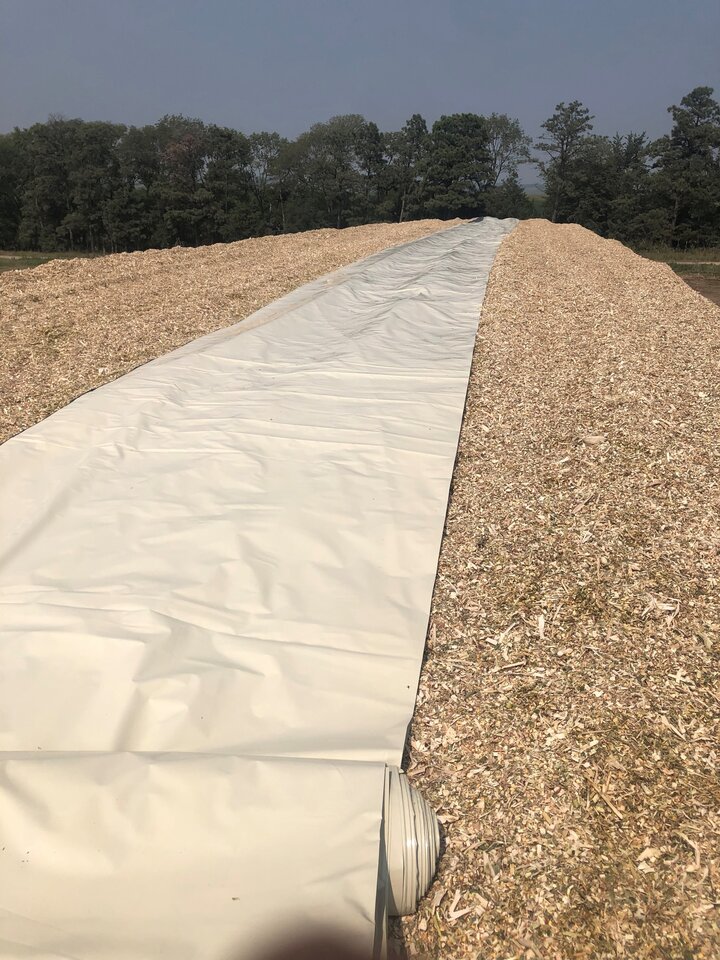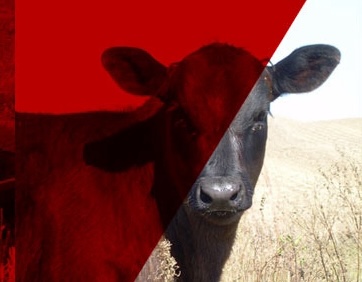When it comes to silage, we often focus on yield and harvest timing—but one of the biggest losses can happen after the crop is already chopped and piled. Silage spoilage and the resulting dry matter loss is an invisible thief, quietly robbing feed quality and quantity. Adding it up can result in major economic losses over time. The good news? Small changes in storage can have a big impact.
While this information applies to silages, it is worth pointing out that dry hay stored outside (and many other feeds) lose material over time (i.e., shrink) as well.
Spoilage Adds Up—Fast
Spoilage in silage piles usually occurs in the top and shoulder zones where oxygen penetrates. Oxygen is the enemy for ensiling, so uniform packing density is critical for stable storage. Once properly packed, covering with oxygen limiting barriers has shown to further reduce dry matter losses. Dry matter (DM) loss from the shoulders of drive over piles can easily reach 15–30%2, depending on how well the pile is packed, sealed, and protected from air and water. Even in well-managed piles, average shrink across the entire pile is typically 10–20%2.
If you want to determine the actual amount of shrink for your operation, then you need to accurately account for weights put into storage (and sample for moisture/DM) and then accurately account for all material fed out (and sample for moisture/DM). Sampling at both the time of ensiling and during feed-out is critical as moisture/DM content changes some during ensiling (usually gaining 1 percentage in moisture while ensiling in the first 28 days).
Let’s break that down:
- A 1,000-ton pile with 15% DM shrink loses 150 tons of feed.
- At $60 per ton (as-fed)3, that’s $9,000 in lost feed—enough to cover the cost of a cover and then some.
- At a minimum, shrink is costing you dollars in lost feed. Additionally, it may result in needing to purchase additional feed as the estimated amount available was actually less. Lastly, the feed quality with spoilage may make the feed less nutritive (lower in energy) resulting in poorer performance or requiring more to meet the same nutrient value of higher quality silage.
- Best way to calculate needs is to divide by 1-% shrink. For example, if you need 1000 tons to feed, and you plan for 15% shrink, then you need to put up 1176.5 ton of silage (1000/(1-.15)) = 1176.5 ton of DM. Your shrink loss is 176.5 ton of DM.
These aren’t just numbers. This is feed you paid to grow, harvest, haul, and pack—and now can’t feed. Managing the harvesting process, packing sufficiently, and covering can make silage a profitable feed choice, while not managing silage can make it a feed you should not use. Once shrink increases above 15-20% of DM, then you should consider not using silage. Simply packing it some and not covering or not feeding out sufficiently from the face will cost you more than if you had used other alternative forages.
Why Covering Pays
Research has consistently shown that covering piles can cut DM losses nearly in half. Research trials comparing uncovered vs. plastic-covered silage piles report:
- Uncovered piles: 20–30% DM loss,2
- Plastic-covered piles: 10–15% DM loss2
- Oxygen-barrier + plastic: as low as 8-9% DM loss6
An oxygen-barrier film under traditional plastic sheeting reduces oxygen infiltration and surface spoilage, especially in the top 1–3 feet where air exposure is highest1.
Covering with oxygen-barrier film may cost $0.20–$0.40 per square foot, but the reduction in spoilage typically pays for itself within a single season.
Choosing the Right Storage: Pads, Bunkers, or Uprights?
Long-term, evaluating your storage structure can yield some of the biggest returns.
- Drive-over piles are flexible and cost-effective up front but tend to have higher spoilage losses—especially along the shoulders and top if not carefully packed and sealed4.
- Bunker silos (with concrete walls) can allow for better compaction, safer feed-out, and reduced oxygen infiltration at the edges over drive over piles but need more complicated management and covering techniques to show these improvements.
- Upright silos and ag bags often show the lowest DM losses but come with higher capital or operating costs and less flexibility.
If you’re feeding high-value livestock or depend heavily on silage for your ration, reducing shrink by 5–10% year over year can easily justify infrastructure improvements.
A Simple Rule of Thumb
For every 1% reduction in shrink, you save $0.60/ton (assuming $60/ton as-fed silage)3. Over 1,000 tons, that’s $600 in feed savings for just 1% reduced. If we improve loss by 5%, we are up to $3,000. So even a modest improvement—like better covering or improved pad drainage—can pay for itself within a single season.
Bottom Line
Spoilage may be out of sight, but it shouldn’t be out of mind. Covering piles with plastic—especially with an oxygen barrier—pays. Investing in good pad drainage, proper slope, and possibly permanent structures like bunkers can dramatically reduce losses and improve long-term feed quality.
Don’t just measure your pile by tons harvested—measure by tons fed.
References:
- Roach, J., Holmes, B. Drive-Over Silage Pile Construction. University of Wisconsin Extension. https://cropsandsoils.extension.wisc.edu/articles/drive-over-silage-pile-construction/
- Borreani, G., Tabacco, E., Schmidt, R. J., Holmes, B. J., & Muck, R. E. (2018). Silage review: Factors affecting dry matter and quality losses in silages. Journal of Dairy Science, 101(5), 3952–3979. https://doi.org/10.3168/jds.2017-13837
- Berger, A., Erickson, G. (2023). Is That Corn Crop Worth More as Silage or Grain?. University of Nebraska–Lincoln BeefWatch. https://beef.unl.edu/beefwatch/2023/corn-crop-worth-more-silage-or-grain/
- Clark J. (2000). Storing Forage in Piles. University of Wisconsin Extension.
https://www.sciencedirect.com/science/article/pii/S002203020373611X
- Wilkinson, J. M., & Fenlon, J. S. (2013). A meta-analysis comparing standard polyethylene and oxygen barrier films for conserving forage maize. Grass and Forage Science, 69(3), https://www.rwn.org.uk/Meta%20analysis%20Silostop%2011.10.2013.pdf
Article by Ben Beckman, Nebraska Extension, Livestock Educator.

